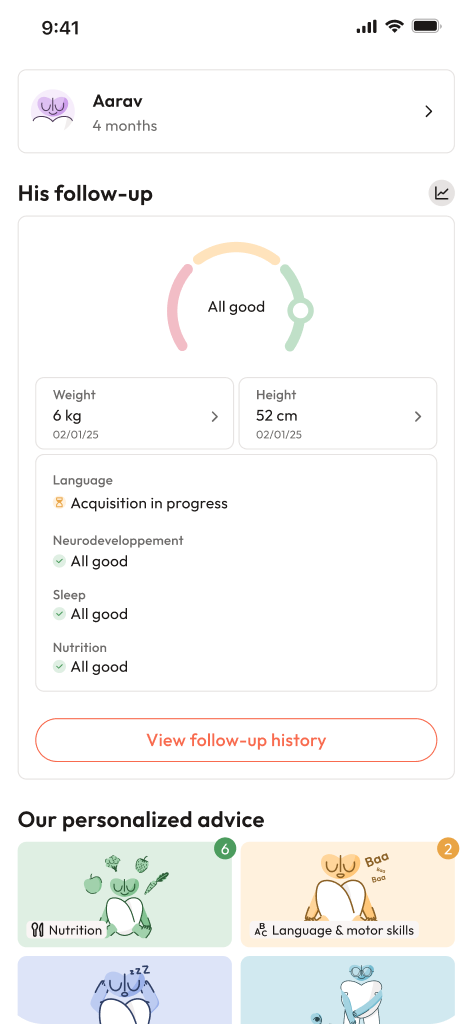When expecting a baby, even the smallest worry can take up space in a parent’s heart. One term that often stirs questions—and sometimes quiet fear—is “rubella pregnancy.” This gentle-sounding virus, so trivial in childhood, transforms into a major concern when it appears during pregnancy. How does an invisible pathogen like rubella spark such anxiety among families? Can something as commonplace as a childhood rash really shape the outcome for both mother and child? In a world of modern medicine, why do doctors still talk so much about rubella pregnancy and vaccination? Here, parents will find clarity on what rubella pregnancy may entail, why timing matters so fiercely, how scientific vigilance—and small, everyday decisions—protect families, and what genuine steps can tilt the balance towards reassurance.
What Exactly Is Rubella, and Why Does It Matter So Much in Pregnancy?
The word “rubella” might bring to mind simple childhood illness, hardly more noteworthy than a common cold. Yet, beneath this gentle facade, the reality in pregnancy is starkly different. Rubella, or German measles, is a contagious viral infection transmitted by respiratory droplets—a cough, a sneeze, or sometimes, just ordinary close conversation. Barely noticeable in most adults—perhaps just a faint rash and a mild fever—it becomes a medical red alert when contracted by a pregnant woman, especially during the first trimester.
Why? Because rubella pregnancy is not just a concern for the expectant mother. The real impact is on the developing baby. When the rubella virus crosses the placenta, it can cause miscarriage, stillbirth, or a host of birth defects collectively labelled as congenital rubella syndrome (CRS). These are not merely passing symptoms—think lifelong hearing loss, vision troubles, heart anomalies, and delays that touch every milestone. The most striking aspect: even when the mother feels perfectly well, infection can slip silently to her growing baby.
Vaccination stands as the most trusted shield. There’s no specific cure—no antiviral pill or quick fix. That’s why “rubella pregnancy” remains at the forefront of public health conversations and why parents, healthcare professionals, and communities rally around prevention.
How Does Rubella Spread in Pregnancy? What Makes Timing So Sensitive?
Rubella’s contagiousness has its own rhythm—its highest danger phase begins nearly a week before symptoms bloom on the skin. Someone could seem perfectly healthy and yet be the reason a pregnant neighbour becomes exposed to the virus. Classrooms, busy hospital waiting areas, bustling family ceremonies—these are the silent stage sets for rubella pregnancy risks.
But timing, truly, is destiny. The “first 12 weeks” of pregnancy carry the biggest risk; more than 80–85% of babies exposed at this time will suffer serious consequences. After the 20-week mark, the threat of severe birth defects drops steeply—but not fully to zero. That early window demands special attention and extra care.
Recognising Symptoms: When to Be Watchful, and Why Many Cases Go Unnoticed
The palette of symptoms in rubella pregnancy can be so subtle that it feels almost unfair. A pinkish non-itchy rash beginning at the face—with or without a touch of fever, perhaps some mild conjunctivitis, headaches, or swelling behind the ears. Sometimes, joints may ache (especially in women). But here’s the twist: about half of rubella infections pass with no symptoms whatsoever. Imagine, then, why health workers insist on routine screening—it’s a way of catching risks hiding in plain sight.
Several other common infections (measles, parvovirus B19, scarlet fever) look almost like rubella, confusing even experienced eyes. Only laboratory science steps in here—a blood test for rubella-specific IgM and IgG antibodies gives a solid answer. In uncertain cases, more advanced tests like PCR analysis (searching for the virus’s genetic trace) or amniocentesis (sampling amniotic fluid) come into play.
Medical Consequences of Rubella in Pregnancy: Why the Fetus Is the Focus
For mothers, rubella often brings nothing worse than joint pain or mild discomfort—arthritis of the fingers and wrists is the most frequent complaint, and rarely, something more serious. But the virus’s true target is the developing baby.
During the all-important first trimester, rubella pregnancy may interrupt the construction of vital organs: the heart, the eyes, the ears, and the brain are all at stake. The list can be daunting—miscarriage, stillbirth, even preterm labour. As weeks go by, the direct risk of major malformations falls, but babies exposed between 13–20 weeks may still develop hearing loss or isolated defects.
Congenital Rubella Syndrome: The Spectrum of Effects
If rubella reaches the fetus, the diagnosis shifts from a passing infection to congenital rubella syndrome (CRS). The most frequent outcome: sensorineural deafness. But the repercussions do not end there. Imagine a newborn with cataracts clouding the world, or a persistent ventricular shunt in the heart needing surgical correction. Sometimes, the damage is less visible—developmental delays, learning difficulties, or even metabolic disturbances like type 1 diabetes emerging years after birth.
Late onset problems complicate life-long care. Visual impairment, hearing loss, thyroid issues, and behavioural challenges may appear much later, urging families to continue with regular specialist reviews and dedicated support.
Diagnosing Rubella During Pregnancy: How Medical Teams Search for Answers
Laboratory excellence defines much of the approach. Comprehensive blood tests look for IgG (marker of immunity) and IgM (flag for recent infection). Here’s how interpretations work for parents:
- IgG positive, IgM negative: this brings relief—immunity confirmed, risk is minimal.
- Both negative? That’s a call for caution—no prior exposure means high vulnerability.
- IgM positive: recent exposure likely, more investigation warranted.
Added layers of vigilance include amniocentesis (testing amniotic fluid after 18–20 weeks), focused ultrasounds to spot early abnormalities, and serial monitoring to observe any evolving changes.
Keys to Prevention: Building Barriers Before Rubella Ever Reaches Pregnancy
When it comes to rubella pregnancy, prevention feels almost poetic in its simplicity: the right strategy, used at the right time, breaks the chain. The star player is the MMR vaccine—a combination shot that bestows immunity not just against rubella, but also measles and mumps. Women hoping to become mothers should always know their rubella immunity status, often through a simple blood test during a preconception visit.
Important reminders make their way into every family discussion:
- The MMR vaccine gives lifelong immunity to most people.
- It should never be given during pregnancy, only before conception (a one-month gap is safest).
- If a pregnant woman turns out to be non-immune: no vaccine now, only extra caution, and a shot as soon as possible after the baby’s birth.
- Preventive steps are practical: avoiding close contact with people who have fever and rashes, practicing frequent hand-washing, disinfecting surfaces, and wearing a mask in higher-risk settings.
Vaccination is sometimes surrounded by doubts or misinformation. Reality is reassuring: scientific trials and decades of use confirm that the MMR vaccine causes no rubella, does not create new health issues, and is not responsible for birth defects. Parents can face these choices with scientific confidence.
Community Protection: How Herd Immunity Safeguards the Most Vulnerable
Community immunity works much like a well-woven safety net. When vaccination rates remain high, the rubella virus struggles to find new hosts and fades away—protecting pregnant women, newborns, and others for whom vaccination is impossible. This is why rubella pregnancy remains rare in countries with robust immunisation programs, and why concern rises when local coverage dips.
Rubella Vaccination and Pregnancy: Timelines and Safe Practice
The guidelines are precise for a reason. Because the MMR vaccine is made from weakened live viruses, there’s a theoretical risk (though never proven) if given during pregnancy—so, health professionals advise against vaccination after conception. If vaccination happens by accident, no cause for alarm—a period of careful observation is all that’s needed.
For family planning, immunity should always be checked after infection or vaccination—every subsequent pregnancy deserves the best protection. Preconception screening, reliable medical consultation, and transparent record-keeping transform this task into routine care.
Management and Support if Rubella Infection Happens During Pregnancy
Sometimes, warnings come too late. If rubella pregnancy is confirmed, there is no miracle cure—only supportive medical care: rest, fluids, tracking fever or joint pain, and, most importantly, intensive monitoring of the developing baby through regular ultrasounds and, if needed, advanced diagnostics.
Immune globulin (a special antibody preparation) may sometimes soften the blow of an early infection, but it cannot guarantee the fetus is safe. Decisions about how to move forward—whether pregnancy should continue—depend on timing, severity, ultrasound findings, and the family’s wishes. Throughout, healthcare teams offer not just information, but genuine, empathetic support.
The emotional toll can be considerable. Long conversations with doctors, counsellors, and peer groups create space for questions, fears, and hope. Practical advice is offered, but so too is reassurance: careful science and compassionate guidance always go hand-in-hand.
Living With the Long-Term Impact: Supporting Families Beyond Birth
Children born with congenital rubella syndrome may require ongoing care: countless visits to specialists, audio and visual aids, school support, endrocrine and metabolic follow-up. Family routines are redefined, balancing between what is possible and what is needed. Social networks—both formal support groups and informal friendships—become pillars holding up both children and parents.
Medical check-ups, therapy sessions, community assistance: each plays a part in making life both possible and meaningful after a rubella pregnancy. And through it all, dedicated professionals, patient educators, and support groups extend encouragement and expertise.
Codesigning Care: The Value of a Multidisciplinary Team
Rubella pregnancy brings together a constellation of healthcare experts:
- Obstetricians for assessing maternal risks and making precise delivery arrangements.
- Paediatricians, neonatologists to step in from the very first cry.
- Audiologists, ophthalmologists, cardiologists, neurologists, endocrinologists to unravel the full spectrum of effects—hearing, sight, circulation, learning, and metabolism.
- Nursing and allied health professionals, who become the trusted hands guiding, listening, and following up across the months and years that follow.
Because rubella is never purely a medical story, the health team includes counsellors, social workers, and education specialists—support that is truly family-centred and adapts as each family’s journey unfolds.
Key Takeaways
- Rubella pregnancy transforms a gentle virus into a serious risk—especially between conception and week 12.
- Vaccination before pregnancy provides powerful, lasting protection—screening for immunity is an essential step for all women who may become mothers.
- If immunity is missing, extra caution and avoidance of people showing fever/rash symptoms are very important throughout pregnancy.
- There is no magic cure for rubella—but early diagnosis, vigilant management, and expert follow-up shift the balance towards better outcomes for mother and child.
- Families facing either confirmed or suspected rubella pregnancy benefit from clear information, competent medical guidance, and emotional support tailored to their reality.
- Community vaccination shields those who cannot protect themselves, making rubella pregnancy rare when everyone plays their part.
- For more guidance, and to access free children’s health questionnaires and parent-focused advice, download the Heloa app.
Questions Parents Ask
Can I breastfeed if I had rubella during pregnancy?
Yes, you can absolutely breastfeed your newborn even after a rubella pregnancy. The rubella virus does not pass through breast milk. Breastfeeding, in fact, only strengthens your bond with the child and supports their growth. If you have any queries or if your healthcare team suggests specific precautions, feel free to consult them for guidance suited to your situation.
What should I do if I was exposed to rubella and I’m already pregnant?
If you suspect a rubella exposure during pregnancy, contact your healthcare provider as promptly as possible. Even in the absence of symptoms, a blood test can clarify your immunity status. If results show you lack protection, there are sometimes options (like immune globulin) that may be considered quickly—but these do not fully guarantee your baby’s safety. Regardless, expert medical support and attentive listening are important through this period. Rest assured, every pregnancy journey is unique, and the medical team is there to guide you.
If I was vaccinated as a child, do I need to worry about rubella during pregnancy?
If you received the MMR vaccine in childhood, nearly all individuals remain protected for life. Still, a simple blood test can check immunity if you are uncertain or just want to be sure. Once you know you’re protected, you can feel reassured—immunity is strong protection for both you and your future baby.
Further reading:









